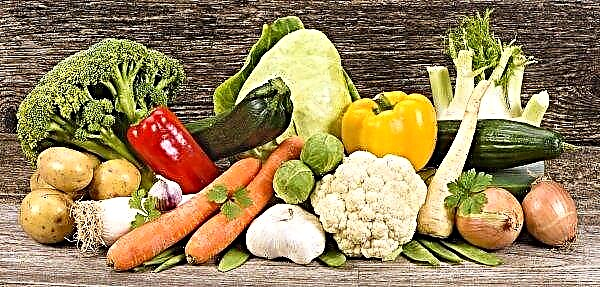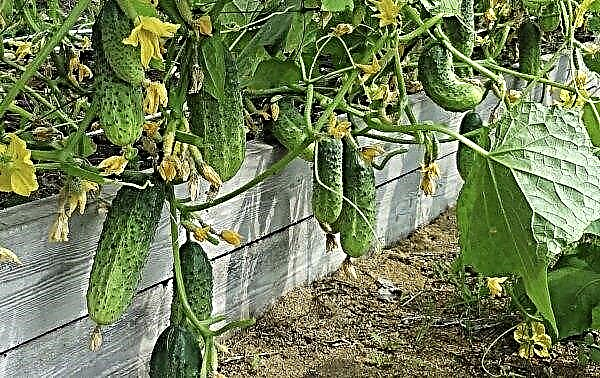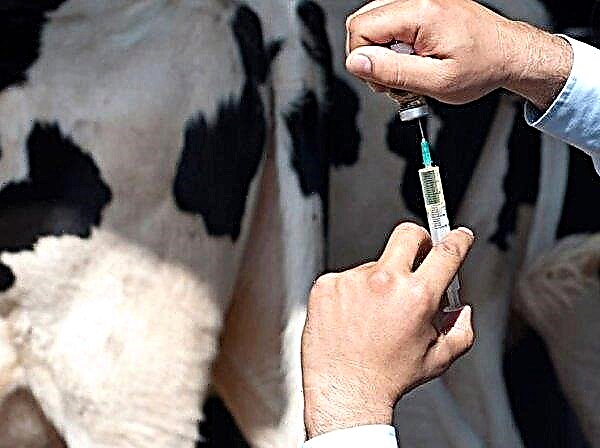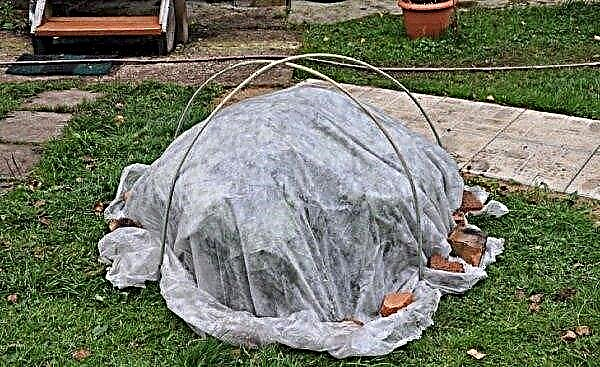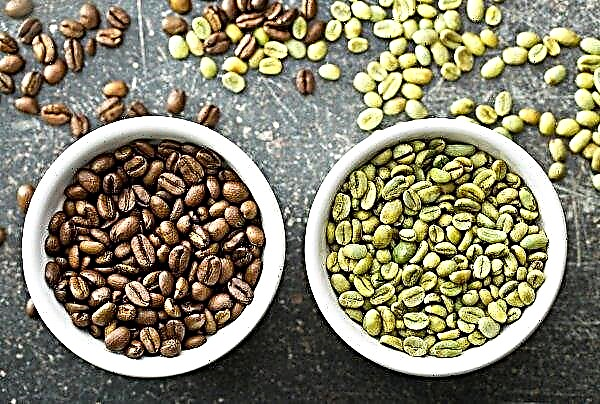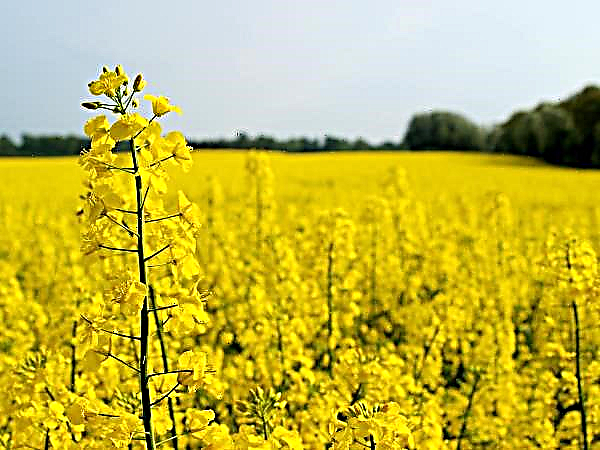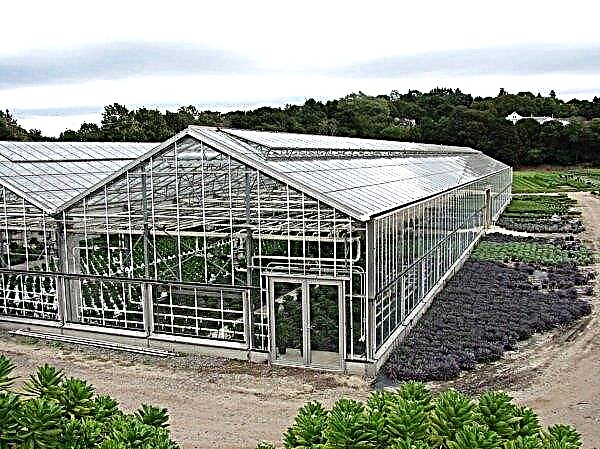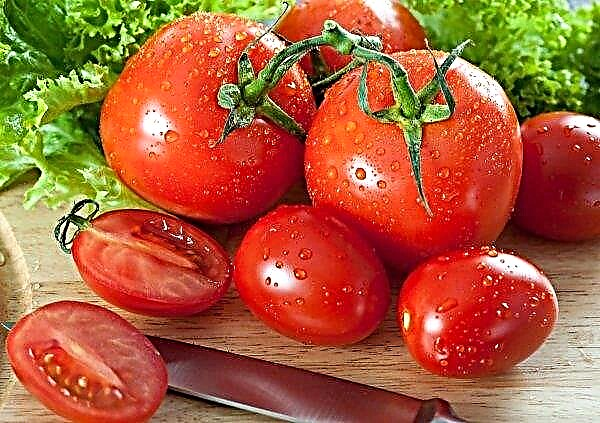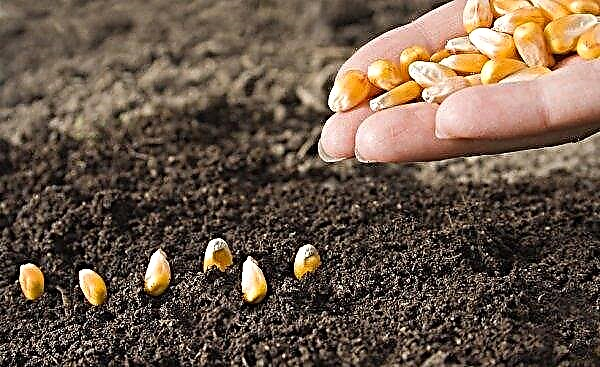If you decide to plant barley as green manure on the site, this will avoid the constant introduction of organic and mineral fertilizers. This cereal crop saturates the earth with useful substances and microorganisms that improve the quality of the soil and increase its bearing.
Is it possible to sow barley as siderat
Siderata is popularly called “green fertilizer”. These plants are ideal for increasing soil fertility. The process of using such crops is called “sideration”. Barley is a variety of cereals that is actively used as siderate. By the time the green mass is growing, a large amount of organic and mineral substances is accumulating in it, so the culture becomes an environmentally friendly fertilizer.
Did you know? Information about cultural barley is found in the Indian book "Rigveda" for 2 thousand years BC. e.
What can I plant after him
In most cases, green manure is planted to improve the condition of the soil and improve the site. With the help of barley, the development of diseases and pests such as scab and nematode can be prevented. For this reason, it can be planted before planting potatoes. You can not plant cereal crops before growing other cereal crops (oats, wheat, rye).
It is best to sow legumes or cruciferous plants after it:
- peas and beans;
- cabbage and radish;
- radish and turnip.

Combinations with other cultures
Experienced farmers recommend cultivating several green manure at once in the country. This will prevent soil fatigue. Barley is very well combined with various varieties of mustard. It is also preferred to sow with phacelia and amaranth. The great benefits of sideration are observed if planted together with legumes (alfalfa, melilot, lupine, etc.). If you decide to follow this recommendation, then try to take into account the degree of growth of the root system. It is best to keep the correct proportions when creating the seed. Mix bean and cereal in a ratio of 1: 5.
Did you know? Barley was considered a symbol of Ancient Egypt, which is why it was found in many tombs of the pharaohs.
What is the benefit for the garden
The great benefit of barley as a green manure for the garden is that an additional layer of compost is formed on the soil surface. This creates additional protection against the negative effects of the weather.
 The plant roots feed on beneficial worms and microbes that increase soil fertility. In addition, in the process of growth, cereals and other siderates overshadow the soil, which slows down the development of weeds.
The plant roots feed on beneficial worms and microbes that increase soil fertility. In addition, in the process of growth, cereals and other siderates overshadow the soil, which slows down the development of weeds.
How to sow for fertilizer
To plant barley to fertilize the site, it is necessary to determine the optimal timing, given the difference in varieties. You will also need to use the recommended amount of seeds. Follow all sowing rules indicated in the detailed instructions. You can plant the crop manually or use accessories. It all depends on the size of the plot.
Sowing dates for spring and winter varieties
To determine the optimal timing of sowing, it must be borne in mind that barley is spring and winter. The first crop is planted in the spring, and the second in the autumn. Winter varieties are recommended to be planted in the south of the country, where a mild climate prevails. Low temperatures can cause freezing. To plant this green manure in spring, soil conditions should be considered. The planting process must be started when the temperature of the soil is at least + 5 ° C.
Optimal planting time:
- Winter varieties - from late August to mid-September.
- Spring - from the second half of March to April.

Grain Consumption
The optimal consumption of grains is 15–20 g per 1 m². This volume will be enough to nourish the soil with useful elements. If you want to suppress weed growth, you can use 27-30 g per 1 m². Due to this amount, there will be no place for the development of plants on the site that slow down the development of crops.
Important! In order for the seeds to germinate, it is necessary to ensure high-quality watering. This is the only stage of care, since there is no need to feed and loosen the soil for green manure.
Sowing process
Sowing technology is as follows:
- Clean the site of weeds and foreign objects (stones, glass, etc.).
- Dig it over 1 bayonet of a shovel.
- Level the soil with a rake.
- Spread the grains evenly over the surface of the soil, after which they need to be buried with a rake.
- Pour water (about 20 liters per 1 m²).

Rules for greening and digging soil
Some farmers mistakenly believe that you need to constantly dig up the soil in the process of green manure. However, after these actions, more than 80% of the benefits are lost. Such actions violate the structure of the earth and the symbiosis of microorganisms that are in the soil. There is no process of decomposition of green mass in the soil, so siderates begin to rot, increasing the size of toxic pathogens in the soil. Fast fermentation of green mass and the formation of humus are achieved when there are conditions for this - a sufficient amount of oxygen and moisture.
Important! Spring barley, which was planted before winter, do not mow. In the cold season, the green mass decomposes under the snow cover, improving soil fertility.
Follow the basic rules of sideration:
- Cut the barley under the root with a plane cutter. The procedure is carried out to ear.
- Spread the green mass evenly over the surface. If necessary, you can plant it a little in the soil.
- Water the plot in dry weather.
- Plant main crops 21 days after mowing siderat.

Advantages and disadvantages of barley as siderat
- The benefits of barley as green manure include:
- humus formation - this improves breathing, photosynthesis and resistance to diseases and pests;
- soil structuring - through small channels, water penetrates into the inner and upper layers of the earth, so it becomes more loose and favorable for planting subsequent crops;
- soil disinfection - discharge from the root system of barley destroys most bacteria and viruses;
- preventing the development of pests - the plant attracts insects that destroy nematodes and aphids;
- erosion protection;
- increase the quantity and quality of the crop.
In addition to its advantages, culture has one drawback. The bottom line is that it provokes the development of such a pest as a wireworm. That is why after barley you can’t plant gourds, carrots, beets and other root crops that this insect harms, or rather its larvae

What is better to use: barley or oats
If you do not know what is better to use: barley or oats, then first you need to study the characteristics of each of the crops. First of all, you should take into account the climatic conditions of the region in which you live. In areas where drought prevails, it is necessary to plant barley, because it is drought tolerant.
Oats are ideal for acidic and peaty soils. It saturates the soil with potassium, which allows further cultivation of crops such as tomatoes, peppers and eggplant in this area. This is due to the fact that these vegetables need a lot of potassium substances.

So, now you know exactly how barley can be used as siderate. If you want to increase the nutritional value of the soil in order to contribute to a better crop yield, this type of cereal is ideal for this. Follow optimal sowing dates and norms to see all the advantages of this siderat.


